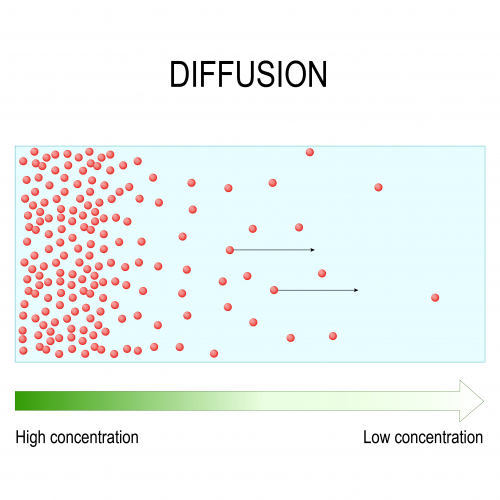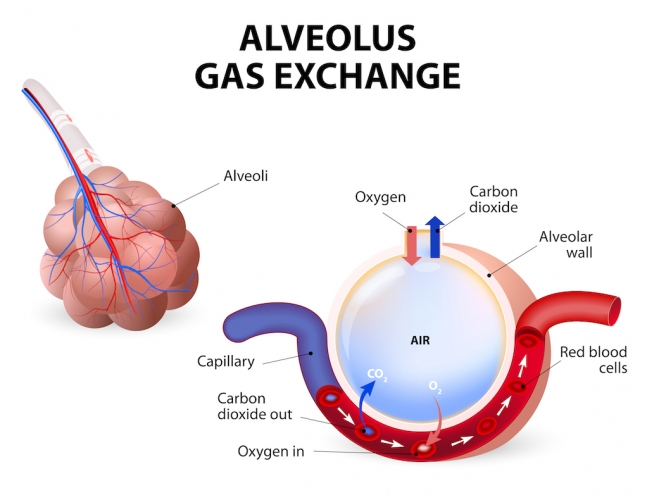How is it that we can smell someone's stinky PE socks from all the way across the classroom? Yuck!
Normally, it's because sweat and other molecules are moving away from the socks and spreading out in the air. This is called diffusion.
.jpg)
Diffusion is the spreading out of particles. The particles might be in a liquid or a gas, like the sweat from the socks spread out into the air around it. The particles of sweat move from an area of high concentration, which is where there's more particles (the socks), to an area of lower concentration, where there's fewer particles (the air surrounding it).

Living organisms need different substances to be able to survive and function. These substances need to be transported in and out of their cells through diffusion. During diffusion, particles move from an area of high concentration to an area of low concentration. We say they move down a concentration gradient. Particles diffuse until they are evenly spaced apart. Diffusion happens naturally and doesn't need energy, so we say it's a passive process.
Diffusion in organisms
The cell membrane has an important job to do. It is selective. This means it won't just let any random particle through - it can monitor which particle is allowed through it and also how many. Pretty clever, right?!
In unicellular organisms like the amoeba (organisms made up of only one cell), diffusion is how the organism gets its food, oxygen and how it gets rid of waste products. As it's only made up of one cell, the particles of food or water, for example, don't have far to travel, so diffusion is the simplest way to enter the cell. They don't need complex transport systems.
In multicellular organisms, surfaces and organ systems are specialised for exchanging materials. This is to allow molecules to be transported into and out of cells for the organism’s needs. Diffusion is the main way that substances move over short distances in organisms.
Breathing involves exchanging gases in the lungs - this requires diffusion. When you breathe in, oxygen in the inhaled air diffuses through the tiny air sacs (alveoli) in your lungs into your bloodstream and is transported around your body. Carbon dioxide is the waste gas produced by respiration - it diffuses from cells into the bloodstream and is exhaled by the lungs.

Diffusion also occurs in plants. Plants take in carbon dioxide for photosynthesis and produce oxygen. These enter and leave the plant through the process of diffusion.
.jpg)
In this activity, we will define and describe the process of diffusion.








